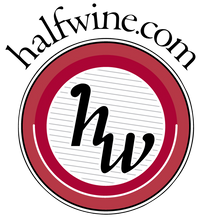Sparkling
Champagne
Pinot Noir
Cork
Dry
No Oak
ABV 12%
Tasting notes
Fresh, fruity with fine bubbles. Perfect as an aperitif or with canapés, seafood and white meats.
Why we recommend this wine
We tasted Allouchery-Perseval’s champagnes at a tasting in London and were impressed. We were looking specifically for a Blanc de Noir, that is, white wine from red grapes to complete our Champagne tasting pack. Tradition Extra Brut is an excellent example with the added benefit of a dosage of only 3g/l.
The wine
Allouchery-Perseval’s blanc de noir is made from Pinot Noir from Premier cru vineyards on the Montagne de Reims rather than Pinot Meunier (the other black grape used to make champagne) which is more common in the Vallée de la Marne. We find the Pinot Meunier makes wines that are too fruity to our taste; we prefer the elegance and restrained fruit that Pinot Noir gives. To the wine from the current vintage they add 30% of reserve wines from previous vintages to give added complexity.
The wine estate
Allouchery-Perseval makes what is referred to as Grower Champagne. In Champagne a large proportion of the vineyards are family owned and worked. Traditionally they have sold their grapes to the Champagne “Houses” who then make the champagne. But an increasing number of families who own the better vineyards have gone into making their champagne. Hence the term Grower Champagne.
Allouchery-Perseval, a fourth generation champagne maker, is based in the village of Ecueil in the Montagne de Reims area of Champagne.
alloucheryperseval.com
Food and wine
Champagne is better if it has been opened and allowed to breathe for 20 to 30 minutes before drinking. We didn’t believe it when we were first advised to do this but it really works. Just open the bottle and leave it in the fridge; it will not lose its bubbles but will taste much better. This champagne has rich, yellow fruit flavours with good acidity so will match food that does not have overpowering flavours such as white meats and seafood. Also see our guide to pairing food and wine here.
Did you know?
Almost all champagnes have sugar added to them. Brut champagne can have up to 8 gms per litre. Champagnes spend most of their time in the bottle under a bottle top closure. When it is time to sell the champagne they remove the bottle cap and put in the champagne cork. During this process they add the sugar mixed with a little wine, referred to as dosage.
Fresh, fruity with fine bubbles. Perfect as an aperitif or with canapés, seafood and white meats.
Why we recommend this wine
We tasted Allouchery-Perseval’s champagnes at a tasting in London and were impressed. We were looking specifically for a Blanc de Noir, that is, white wine from red grapes to complete our Champagne tasting pack. Tradition Extra Brut is an excellent example with the added benefit of a dosage of only 3g/l.
The wine
Allouchery-Perseval’s blanc de noir is made from Pinot Noir from Premier cru vineyards on the Montagne de Reims rather than Pinot Meunier (the other black grape used to make champagne) which is more common in the Vallée de la Marne. We find the Pinot Meunier makes wines that are too fruity to our taste; we prefer the elegance and restrained fruit that Pinot Noir gives. To the wine from the current vintage they add 30% of reserve wines from previous vintages to give added complexity.
The wine estate
Allouchery-Perseval makes what is referred to as Grower Champagne. In Champagne a large proportion of the vineyards are family owned and worked. Traditionally they have sold their grapes to the Champagne “Houses” who then make the champagne. But an increasing number of families who own the better vineyards have gone into making their champagne. Hence the term Grower Champagne.
Allouchery-Perseval, a fourth generation champagne maker, is based in the village of Ecueil in the Montagne de Reims area of Champagne.
alloucheryperseval.com
Food and wine
Champagne is better if it has been opened and allowed to breathe for 20 to 30 minutes before drinking. We didn’t believe it when we were first advised to do this but it really works. Just open the bottle and leave it in the fridge; it will not lose its bubbles but will taste much better. This champagne has rich, yellow fruit flavours with good acidity so will match food that does not have overpowering flavours such as white meats and seafood. Also see our guide to pairing food and wine here.
Did you know?
Almost all champagnes have sugar added to them. Brut champagne can have up to 8 gms per litre. Champagnes spend most of their time in the bottle under a bottle top closure. When it is time to sell the champagne they remove the bottle cap and put in the champagne cork. During this process they add the sugar mixed with a little wine, referred to as dosage.




